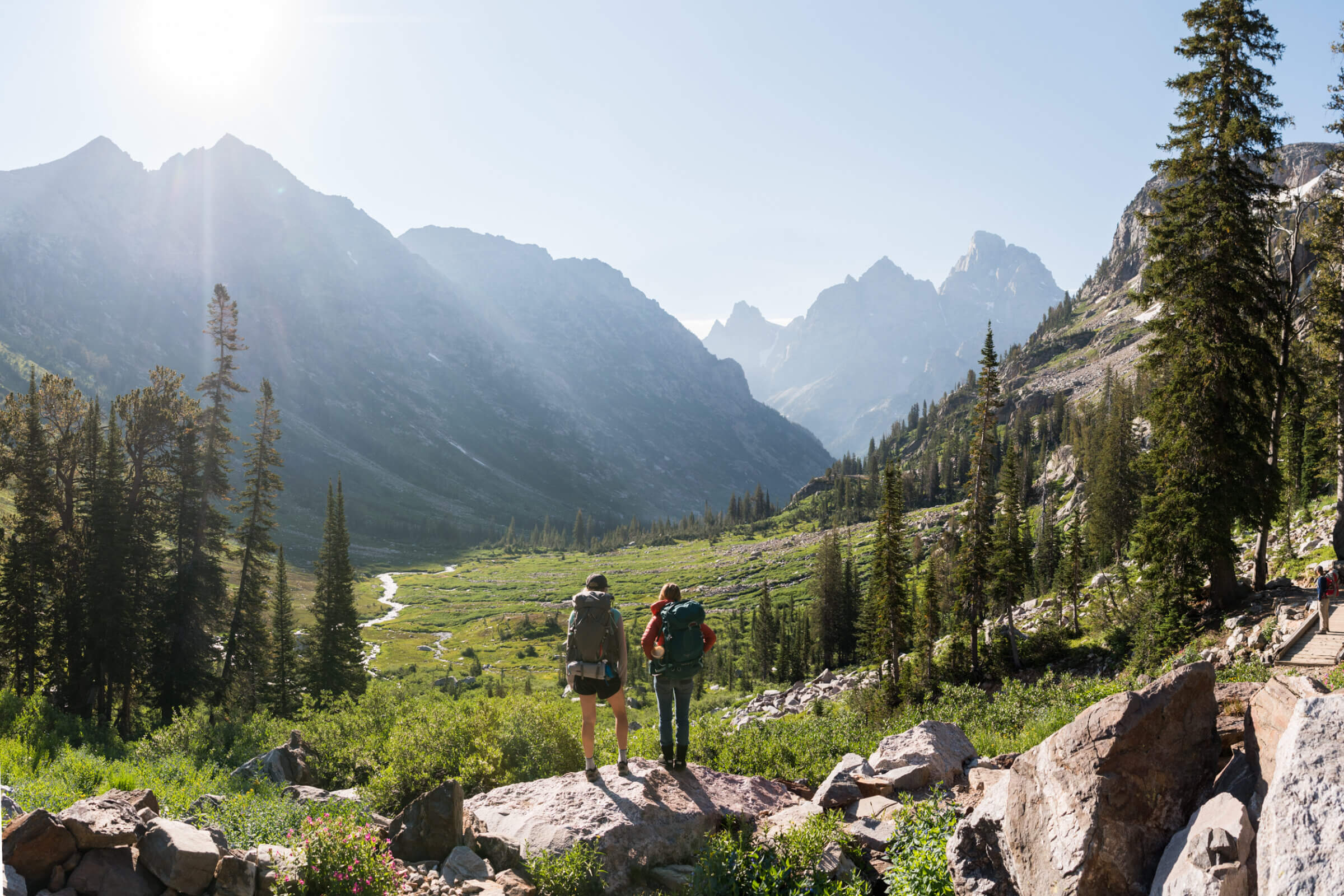How Can Tourism Dollars Protect the Places We Love?

Visitor-Funded Ambassador Programs
What if the act of visiting a place helped preserve it?
That's the question highly-trafficked destinations around the world seek to answer when allocating tourism-generated funds.
In Teton County, Wyoming, the Jackson Hole Travel & Tourism Board (JHTTB) believes they've found an answer that supports their destination, which sees over 2.6 million visitors a year: tourism-funded ambassador programs.
For the fourth year in a row, the JHTTB used tourism dollars to substantially fund boots-on-the-ground stewardship efforts in and around Jackson Hole. And the results of these programs are backing up the JHTTB’s belief that tourism dollars can protect our unqiue landscapes.
Why Ambassador Programs?
Why spend tourism revenue on trail crews, backcountry shuttle programs, and campfire safety? The answer lies in the growing need to balance visitation with preservation.
Since launching in 2021, the Friends of Bridger-Teton Ambassadors for Responsible Recreation Program, funded by the Jackson Hole Travel & Tourism Board, has extinguished over 800 abandoned campfires and issued more than 350 food storage and camping violations. Also facilitated through lodging tax dollars, the Teton Backcountry Alliance has shuttled 4,800 skiers safely up Teton Pass and Jackson Hole Nordic Alliance has increased responible use on nordic trails. These are the quiet wins that don’t always make headlines but matter deeply to the local ecosystem and community.
Do you think ambassador service programs are a good use of tourism dollars? Local tourism leaders are now monitoring public input through form at the bottom of this article.
Measureable Results
After five years of individually supporting local ambassador programs and tracking noteworthy results, the JHTTB made a strategic decision to dedicate ambassador service specific funding for the first time in their Fiscal Year 2026 budget. The addition of a new line item in the organization’s budget serves as recognition that face-to-face interactions and boots-on-the-ground service are some of the most impactful ways to modify visitor behavior.
On June 12, 2025, the Board allocated $754,226 to six ambassador programs:
- Friends of Bridger-Teton: $520,000
- Teton Backcountry Alliance: $73,617
- Friends of Pathways: $70,334
- Jackson Hole Nordic Alliance: $43,000
- Bridger-Teton Avalanche Center: $35,875
- Teton Valley Trails & Pathways: $11,400
The three-quarters of a million dollars promises a huge return on investment. Friends of Pathways, Teton Valley Trails & Pathways, and Jackson Hole Nordic Alliance anticipate more responsible and safe trail use year-round from ambassadors dedicated to educating users at trailheads. Bridger-Teton Avalanche Center and Teton Backcountry Alliance will station ambassadors at key ski and snowmobile entry points to monitor activity and share vital information with users, in addition to a skier shuttle service on Teton Pass to help ease parking congestion at popular access areas. And Friends of Bridger-Teton’s most important statistic is that they’ve maintained a record of zero catastrophic human-caused wildfires in ambassador-patrolled areas.
These results are entirely funded by visitors. The JHTTB used visitor-paid lodging tax to support these ambassador services projects, proving that an intentional collection of public funds from visitors can positively impact a place.
Management IS Marketing
In Jackson, funding ambassador programs complements destination marketing by helping sustain the experiences that draw visitors in the first place. The Jackson Hole Travel & Tourism Board leads campaigns that shapes and owns the narrative of what it means to visit responsibly, reinforcing a brand that reflects local values, while also investing in efforts that protect the natural assets at the heart of those campaigns. Winter services that maintain safe trail usage and backcountry access reinforce Jackson’s reputation as a top winter destination. Similarly, initiatives that reduce wildlife disturbance and protect ecosystems from wildfire are essential – not only for tourism, but for the long-term health of the community and environment.
Lessons Learned
While these ambassador programs have delivered measurable benefits for both the landscape and the community, funding decisions have not been without complexity. Over time, local organizations grew to depend on support from the Jackson Hole Travel & Tourism Board, but public funding – especially through lodging tax revenue – can fluctuate. After several years of intentionally and strategically drawing down their reserves, the JHTTB faced a leaner fiscal year in 2026 (July 1 – June 30), and some partner organizations felt the impact, especially as other sources of government funding were also reduced.
In response, the Board was able to reallocate its budget to fund all requests at 70% or more, striving for fairness amid constrained resources. Still, the process highlighted the need for clearer funding expectations and prompted difficult conversations among partners and the Board. Moving forward, a key takeaway is that public funding should be paired with transparent guidelines, and organizations must also explore more diversified and sustainable funding models.
A Model for the Future
Could this model be replicated elsewhere? Jackson Hole’s ambassador funding offers a promising example of how tourism can actively support the stewardship of public lands.
Rather than viewing tourism and conservation as opposing forces, Jackson Hole is asking: What if one could serve the other? With continued support from the lodging tax and growing partnerships with local nonprofits, Jackson Hole is laying the groundwork for a destination where visitors become stewards—and where the act of exploring the Tetons helps ensure they’ll be here for generations to come.
Agree or disagree?
Do you think tourism dollars should be used for ambassador programs? Do you have another perspective not represented in this article? Let us hear it!
The Jackson Hole Travel & Tourism Board may reach out directly to follow up on public ideas presented in this form.
Through strategic allocation of Teton County’s lodging tax funds, we steward Jackson Hole toward a sustainable destination, where our leadership, marketing, management, and community engagement ensure the vitality of our natural and human ecosystems.